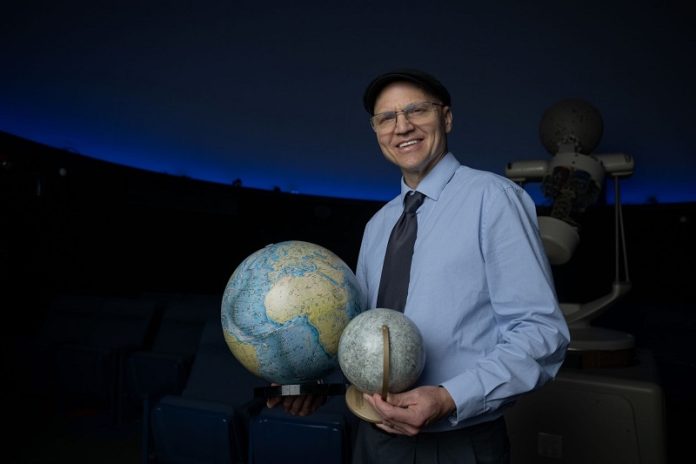
For years, scientists have believed that the moon formed after a massive collision between a young Earth and another celestial body.
The debris from this impact supposedly came together to form our moon. This idea has been the dominant explanation for the moon’s origin for the last 40 years.
However, new research suggests a different, intriguing possibility: the moon might have been captured from space rather than formed from the debris of a collision.
Between 1969 and 1972, Apollo astronauts brought back over 800 pounds of lunar rock and soil.
Scientists found that these materials were chemically similar to rocks and soil on Earth, leading to the belief that the moon formed from Earth’s debris after a collision.
But this widely accepted theory might not be the whole story, according to two researchers from Penn State.
Darren Williams, a professor of astronomy and astrophysics, and Michael Zugger, a senior research engineer, recently published a study that challenges this long-held belief.
Their research, published in The Planetary Science Journal, suggests that the moon could have been captured by Earth’s gravity during a close encounter with a binary system—a pair of two rocky objects.
According to this theory, Earth’s gravity might have pulled one of these objects, the moon, into orbit, creating the satellite we see today.
One of the main reasons Williams and Zugger questioned the collision theory is that a moon formed from a collision should orbit directly above Earth’s equator.
However, our moon orbits at an angle, more aligned with the sun than with Earth’s equator. This odd orbit raised questions about the collision theory’s accuracy.
Williams points out that similar captures have occurred elsewhere in our solar system. For example, Triton, the largest moon of Neptune, is believed to have been captured from the Kuiper Belt, a region beyond Neptune filled with icy bodies. Triton’s orbit is unusual—it moves in the opposite direction of Neptune’s rotation and is tilted at a significant angle from Neptune’s equator.
Williams and Zugger calculated that Earth could have captured a satellite even larger than the moon, like an object the size of Mercury or Mars. However, such an object might not have had a stable orbit around Earth.
Initially, the moon’s orbit would have been an elongated ellipse, but over thousands of years, tidal forces—like the pull from Earth’s gravity—would have shaped it into the nearly circular orbit we see today. As time passed, the moon began drifting farther from Earth, a process that continues today. Each year, the moon moves about 3 centimeters farther away from us.
Although Williams and Zugger’s calculations show that a captured moon could behave like ours, they are not claiming this is definitely how the moon was formed. Instead, they believe this new theory offers a fresh perspective and opens the door to further exploration and questions about our moon’s mysterious origins.
“No one knows for sure how the moon was formed,” Williams said. “But now, we have another possible explanation, which could lead to new discoveries in the future.”
Source: Penn State.



